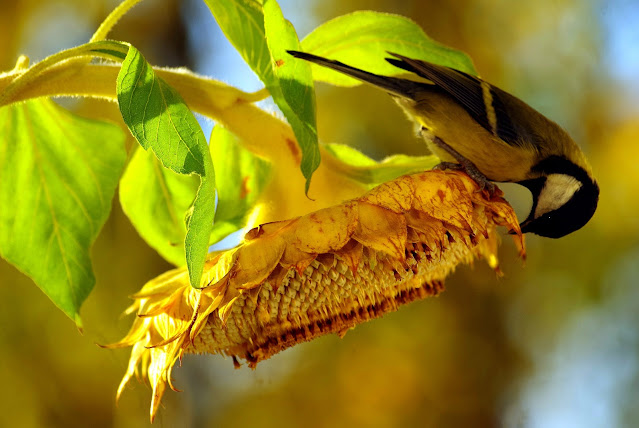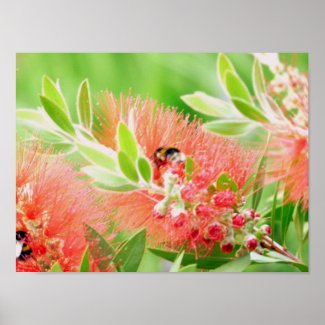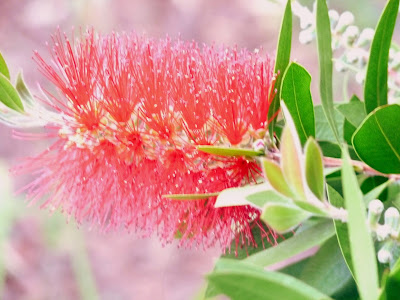Everyone I know has had enough of 2020, so even though Christmas is still a day or two away, it's time to look forward!
There seems to be many authorities on Plant of the Year for 2021 and I
know we all need something to look forward to, so I'm going with the
authorities at the Winnipeg Free Press! They (and I agree with them)
have dubbed 2021 the Year of the Sunflower!
There is so much about sunflowers that I just love and I'm going to fill you
in on just a few of them.
- They are easy to grow from seeds.
- They will grow without any help from you. No fertilizers, no need to baby them!
- By summertime, you will have a beautiful stalk of bright yellow flowers (or some other cultivar).
- They are beautiful cut flowers that last a long time.
- The bees will love you! as well as butterflies, ladybugs, dragonflies, and other insects that all feed on the nectars they produce.
- The flowers are interesting not only for their colors (and there are many) but also for the seeds they are producing.
- If you are into "mathematics", they love working the Fibonacci Sequencing with the seed heads as they are revealed in growth patterns in nature.
- The seed heads are food for birds, squirrels, chipmunks, field mice and more.
- You can bake the seeds for human consumption too! But you can also eat them raw.
- You can have a variety of sunflowers growing together. They will delight you in so many ways.
Sunflower "Elf" is probably the shortest growing at stems of 16 inches
or so in height. Then there is one called Sunforest Mix which can grow
up to 10 feet tall. The seed heads can measure almost 12 inches
across! As it's name implies, if you plant a bunch of these you will
have a "Sunflower Forest" growing. What could be more beautiful?
The bees, birds and small wildlife will thank you!
Did you know that Sunflowers are also yellow with orange centers, or
white? Some varieties have just a few layers of petals around the seed
head, while others are so full of petals that they look fuzzy!
One thing that they all have in common is that they will surely bring a
smile to your face!
Ripening Seed heads! Just one sunflower can produce hundreds of seeds.
That will feed a lot of birds!
This bird can hardly wait for the seeds to ripen on this seed head and he's helping himself to a delicious snack!
Seed heads are easy to harvest. Just grab a sharp knife (be
careful) and cut the seed head off. You don't need to remove the seeds
from the rest of the flower head, unless you want to. Turn the heads
upside down and suspend them with some string and the birds will come for
them. If you have lots of seed heads, you might want to ration them out
a head at a time, so that as winter sets in you still have some heads for the
birds. Sunflower seeds are a great source of food for the birds in the
winter months. They are loaded with oils that birds need for energy
during the coldest months of the year.
If you want to get an idea about how many colors and sizes of Sunflowers
there are, here is a link to
HGTV's 13 Crazy and Colorful Sunflowers!
I think I would love to have a few acres that I could plant with sunflowers
of all types, can you just imagine the riot of color that would be
seen?
As we lead up to Christmas, I won't fill your minds with too much more than
beautiful pictures of the Sunflowers that hopefully will grace your gardens
in 2021. In the language of flowers, sunflowers mean Adoration,
Loyalty, and Longevity! We( all the writers) at Review This Reviews,
adore our fans and readers. We will loyally bring you a variety of
reviews that you will enjoy and we want to be with you and have you visit us
often. A very fitting flower for us, for this time of year and
the year to come.
Decorate your life with a little sunshine that lasts and lasts.
Sunflowers are just one of the cheeriest flowers and so charming in their
own way!
I can't think of a flower that would make me smile bigger and longer than the
sight of a bright yellow or red sunflower!
Note: The author may receive a commission from purchases made using links found in this article. “As an Amazon Associate, Ebay (EPN), Esty (Awin), and/or Zazzle Affiliate, I (we) earn from qualifying purchases.”



















